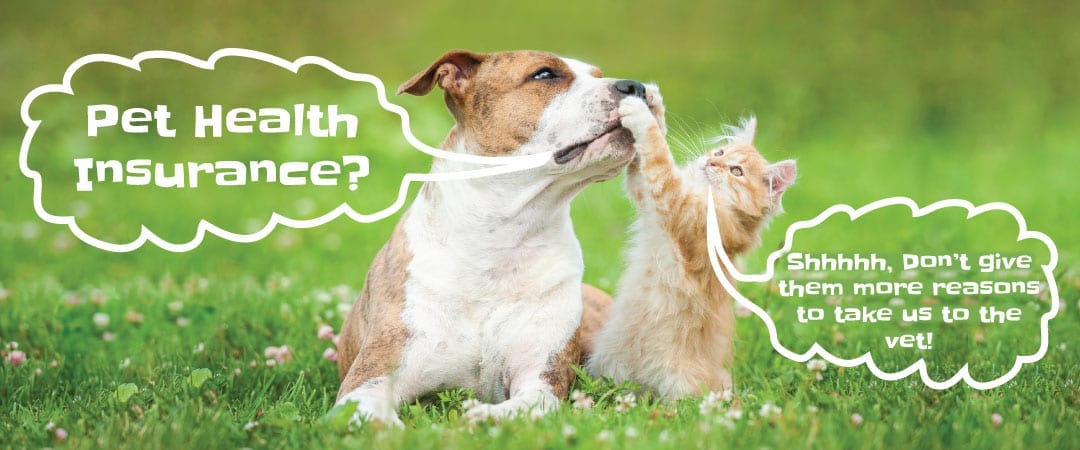
- Definition and Purpose
- Types of Pet Health Insurance
- Factors to Consider When Choosing a Plan
- How to File a Claim
- Benefits of Pet Health Insurance
- Limitations and Exclusions
- Industry Trends and Innovations
- Pet Health Insurance in Different Countries
- Choosing a Pet Health Insurance Provider
- Additional Resources
Definition and Purpose
Pet health insurance is a type of insurance policy that helps pet owners cover the costs of veterinary care for their pets. It can help offset the financial burden of unexpected or expensive medical expenses, such as accidents, illnesses, and surgeries.
Pet health insurance typically covers a wide range of health issues, including:
- Accidents, such as broken bones, lacerations, and poisoning
- Illnesses, such as cancer, diabetes, and heart disease
- Surgeries, such as spaying or neutering, tumor removal, and fracture repair
- Emergency care, such as overnight hospitalization and emergency surgery
- Prescription medications
Types of Pet Health Insurance
Pet health insurance plans vary in coverage and cost, so it’s essential to choose one that suits your pet’s needs and your budget. Here are the most common types of pet health insurance:
Accident-Only Insurance
Accident-only insurance covers expenses related to accidents, such as broken bones, lacerations, and poisoning. It’s a cost-effective option for healthy pets with a low risk of illness.
Comprehensive Insurance
Comprehensive insurance provides the most extensive coverage, including accidents, illnesses, hereditary conditions, and preventive care. It’s the best choice for pets with chronic health conditions or those who need regular veterinary care.
Wellness Insurance
Wellness insurance covers routine care, such as vaccinations, spaying or neutering, and dental cleanings. It’s a good option for pet owners who want to budget for their pet’s preventive health needs.
Factors to Consider When Choosing a Plan

Choosing the right pet health insurance plan is crucial to ensure your furry friend receives the best possible care without breaking the bank. Several key factors should be considered when selecting a plan to find the best fit for your individual needs.
It’s essential to compare different plans and their coverage, premiums, deductibles, and co-pays to make an informed decision.
Coverage
The coverage provided by the plan determines the types of veterinary expenses that will be reimbursed. Some plans offer comprehensive coverage, including accidents, illnesses, and routine care, while others may have more limited coverage.
- Consider the types of veterinary expenses you anticipate your pet may incur and ensure the plan covers them.
- Read the policy carefully to understand any exclusions or limitations.
Premiums
Premiums are the monthly or annual payments you make to maintain your pet health insurance policy. Premiums vary depending on several factors, including the pet’s age, breed, and location.
- Determine a budget for pet health insurance and compare premiums from different providers to find the most affordable option.
- Consider the long-term cost of pet ownership and how pet health insurance can help you manage unexpected expenses.
Deductibles
A deductible is the amount you pay out of pocket before the insurance coverage begins. Deductibles can vary widely among plans.
- Choose a deductible that you can comfortably afford to pay in the event of a veterinary expense.
- Consider the trade-off between a higher deductible with lower premiums and a lower deductible with higher premiums.
Co-pays
Co-pays are a percentage of the veterinary expenses you pay out of pocket after the deductible has been met. Co-pays can vary depending on the plan and the type of veterinary service.
- Understand the co-pays associated with different plans and consider how they impact your budget.
- Look for plans with reasonable co-pays that align with your financial situation.
How to File a Claim
Filing a pet health insurance claim is typically a straightforward process. Here are the general steps involved:
Contact your insurance provider as soon as possible after your pet receives veterinary care. They will provide you with a claim form and instructions on how to submit it.
Gather all necessary documentation, including:
– Veterinary invoice detailing the services provided and charges incurred
– Medical records and test results
– Proof of payment
– Your pet’s microchip or tattoo information (if applicable)
Complete the claim form accurately and provide all required information. Be sure to include a detailed description of your pet’s condition, the treatment received, and any relevant medical history.
Submit the claim form and supporting documentation to your insurance provider. You can usually do this online, by mail, or by fax.
Once your claim is received, it will be processed by the insurance company. They will review the documentation and determine if the claim is covered under your policy.
If your claim is approved, you will receive reimbursement for eligible expenses up to the limits of your coverage. If your claim is denied, you will receive an explanation of the reasons why.
Benefits of Pet Health Insurance
Pet health insurance provides numerous advantages for pet owners, both financially and emotionally. It offers peace of mind knowing that unexpected veterinary expenses will not strain their budget or compromise their pet’s well-being.
Financial Benefits
Pet health insurance helps offset the high costs of veterinary care, which can include:
– Emergency treatments (e.g., accidents, poisonings)
– Chronic conditions (e.g., diabetes, cancer)
– Surgeries (e.g., spaying/neutering, dental work)
– Medications (e.g., antibiotics, pain relievers)
By spreading the financial burden over time, insurance allows pet owners to provide their furry companions with the best possible care without incurring significant debt.
Emotional Benefits
Beyond the financial benefits, pet health insurance also provides emotional support and peace of mind. Knowing that their pet is protected against unexpected expenses reduces the stress and anxiety associated with potential veterinary bills. This allows pet owners to focus on their pet’s well-being and enjoy their time together without financial worries.
Example
For instance, if a pet suffers from a sudden illness requiring hospitalization and surgery, the veterinary expenses could easily exceed thousands of dollars. Without insurance, the pet owner would be responsible for the entire amount, which could put a strain on their finances and make it difficult to provide their pet with the necessary care. However, with pet health insurance, the policy would cover a significant portion of the expenses, allowing the pet owner to focus on their pet’s recovery without facing financial hardship.
Limitations and Exclusions
Pet health insurance policies often come with limitations and exclusions that can affect coverage. Understanding these restrictions is crucial to ensure that your pet’s medical expenses are adequately covered.
One common limitation is the exclusion of pre-existing conditions. These are medical issues that your pet had before the policy was purchased. Pre-existing conditions may not be covered or may have a waiting period before coverage begins.
Breed-Specific Conditions
Certain breeds may be prone to specific health conditions, which may be excluded from coverage or subject to higher premiums. For example, some breeds are more likely to develop hip dysplasia or certain types of cancer.
Age Restrictions
Age restrictions may also apply, particularly for older pets. Some policies may have a maximum age limit for enrollment or may charge higher premiums for older animals. This is because older pets are more likely to develop health issues.
Industry Trends and Innovations
The pet health insurance industry is constantly evolving, with new trends and innovations emerging all the time. These trends are driven by a number of factors, including the increasing popularity of pet ownership, the rising cost of veterinary care, and the growing awareness of the importance of pet health.
One of the most significant trends in the pet health insurance industry is the rise of telemedicine. Telemedicine allows pet owners to consult with veterinarians remotely, via video or phone. This can be a convenient and affordable way to get veterinary care for your pet, especially if you live in a rural area or have a busy schedule.
Another trend in the pet health insurance industry is the increasing popularity of preventative care coverage. Preventative care coverage helps to pay for the costs of routine veterinary care, such as vaccinations, checkups, and dental cleanings. This type of coverage can help to keep your pet healthy and prevent costly health problems down the road.
Innovative Technologies and Approaches
In addition to these trends, there are a number of innovative technologies and approaches that are enhancing pet health insurance offerings. For example, some pet health insurance companies are now using artificial intelligence (AI) to help assess claims and identify fraud. Others are using blockchain technology to create more secure and transparent pet health insurance records.
These trends and innovations are all helping to make pet health insurance more accessible and affordable for pet owners. As a result, more and more people are choosing to purchase pet health insurance to protect their furry friends.
Pet Health Insurance in Different Countries
Pet health insurance coverage and regulations vary significantly across different countries. Understanding these variations can help pet owners make informed decisions about protecting their furry companions.
Coverage and Regulations
- United States: Pet health insurance is widely available and offers comprehensive coverage, including accidents, illnesses, and routine care. Regulations are generally less stringent, allowing for a wider range of plans and providers.
- United Kingdom: Pet health insurance is popular and offers similar coverage as in the US. However, regulations are stricter, with all plans requiring approval from the Financial Conduct Authority.
- Canada: Pet health insurance is becoming increasingly popular but is still less common than in the US or UK. Coverage is generally more limited, focusing on major medical expenses.
- Australia: Pet health insurance is relatively new but is gaining traction. Coverage varies widely, with some plans offering comprehensive protection and others focusing on specific areas like accidents or chronic conditions.
- Germany: Pet health insurance is mandatory for all dogs and is highly regulated. Coverage is comprehensive and includes routine care, preventive measures, and dental treatment.
Challenges and Opportunities
- Developing Countries: Pet health insurance is often unavailable or limited in developing countries due to low awareness, lack of infrastructure, and financial constraints.
- Exotic Pets: Coverage for exotic pets is often limited or non-existent in many countries, presenting challenges for owners of these animals.
- Technology Advancements: Telemedicine and wearable devices are revolutionizing pet healthcare, creating opportunities for more personalized and convenient pet health insurance plans.
Choosing a Pet Health Insurance Provider
Selecting the right pet health insurance provider is crucial for ensuring your furry friend receives the best possible care. Consider the following factors to make an informed decision:
Reputation
Research the provider’s reputation through online reviews, industry awards, and consumer advocacy groups. Positive feedback from other pet owners indicates a track record of reliable service.
Financial Stability
Verify the provider’s financial stability by checking their financial ratings and annual reports. A financially sound company is less likely to experience difficulties that could affect your coverage.
Customer Service
Excellent customer service is essential for resolving any questions or claims promptly. Look for providers with dedicated support teams, easy-to-use online portals, and responsive phone support.
Coverage and Premiums
Compare the coverage options and premiums offered by different providers. Consider your pet’s age, breed, and health needs when selecting a plan that meets your specific requirements and budget.
Claim Processing
Inquire about the provider’s claim processing procedures and timelines. A streamlined and efficient claims process ensures you receive reimbursements promptly.
Network of Veterinarians
Some providers have a network of preferred veterinarians. While this can provide convenience, it may also limit your choice of veterinary care.
Additional Resources
For those seeking additional information on pet health insurance, various resources are available to assist you in making informed decisions.
Reputable websites, articles, and organizations provide comprehensive information, including in-depth guides, expert insights, and unbiased comparisons.
Online Resources
- Pet Insurance University: An educational platform dedicated to pet health insurance, offering articles, webinars, and resources.
- Consumer Reports: Provides unbiased reviews and comparisons of pet insurance providers, based on factors such as coverage, customer service, and affordability.
- Insurance Information Institute: Offers general information on pet health insurance, including its benefits, limitations, and how to choose a plan.
Organizations
- North American Pet Health Insurance Association (NAPHIA): A non-profit organization representing pet health insurance providers, providing information and resources.
- American Veterinary Medical Association (AVMA): Offers resources on pet health insurance, including articles and a guide to choosing a plan.
- National Association of Insurance Commissioners (NAIC): Provides regulatory oversight of pet health insurance, offering consumer protection and information.





